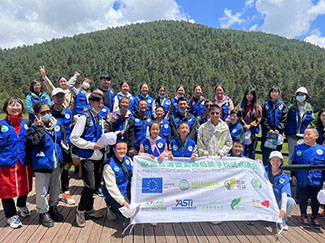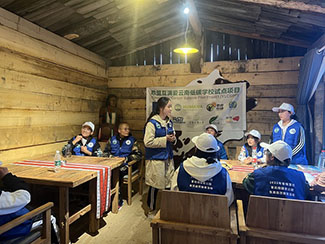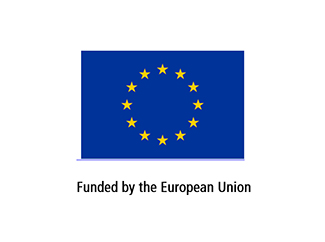consent_cookie
Duración: 1 year
Stores the user's cookie consent state
20-10-2022
The Research Center of Travel and Nature Education Research of the School of Geography and Ecotourism at the Southwest Forestry University and the EU-Humana Yunnan Low Carbon School Pilot Project team carried out a three-day ecological nature education activity in Pudacuo National Park. Fundación Pueblo para Pueblo has been developing this project since 2020 in China, with funding from the European Union and the collaboration of an outstanding group of local organizations.
Pudacuo National Park in Shangri-La, with a total area of 1,313 square kilometers, has a cold temperate mountain monsoon climate due to the high plateau. There are 2,275 species of seed plants belonging to 568 genera in 140 families, including 74 species of mammals belonging. It is a key biodiversity conservation area in China and even in the world, a world-class gene bank of species with global conservation value.
At the same time, Pudacuo National Park is also the center of the "Three Parallel Rivers" World Natural Heritage in northwest Yunnan. It is composed of Bitahai Nature Reserve, an international important wetland, and Zhudu Lake Scenic Spot in Haba Area, a "Three Parallel Rivers" World Natural Heritage. Bitahai Lake, Zhudu Lake and Militang Subalpine Ranch are the main components, and it is also one of the main tourist attractions in Shangri-La.
A total of 37 people participated, including teachers and students from Shangri-La No. 1 High School, the Visitor Services and Special Business Development Departments of Pudacuo Tourism Branch, the 21st Century English Newspaper and students from Yunnan University High School.
Based on the British Lucasian model of environmental education, the nature education programe combines project-based learning with experiential learning, and includes theoretical courses. During the program, Liu Xi, the EU-Humana Yunnan Low Carbon School Pilot Project Coordinator, and Nie Fanxi, a Project Officer, respectively introduced the contents of forest carbon sink and the basis of climate change. In Pudacuo, by leading the students to decipher the plateau wetlands and explore the national parks, we can experience the local natural scenery and cultural customs, and at the same time, we can learn a lot about the concepts and awareness of sustainable development of ecology, low carbon and carbon footprint.
Combined with the abundant landforms and natural resources of Pudacuo Park, the students have a deeper understanding of the ecosystem and wetland system.
Ecosystems are dynamic and complex functional units formed by the interaction of plants, animals and microorganisms with their surrounding inorganic environment. The WETLAND ECOSYSTEM is a unified whole composed of wetland plants, animals, microorganisms and their environment.
The wetland ecosystem belongs to the water ecosystem. Wetland is the most vital ecosystem on the earth's surface. It is known as "kidney of the earth", a species repository and climate regulator. It plays an irreplaceable role in protecting ecological environment, maintaining biodiversity and developing economy and society.


